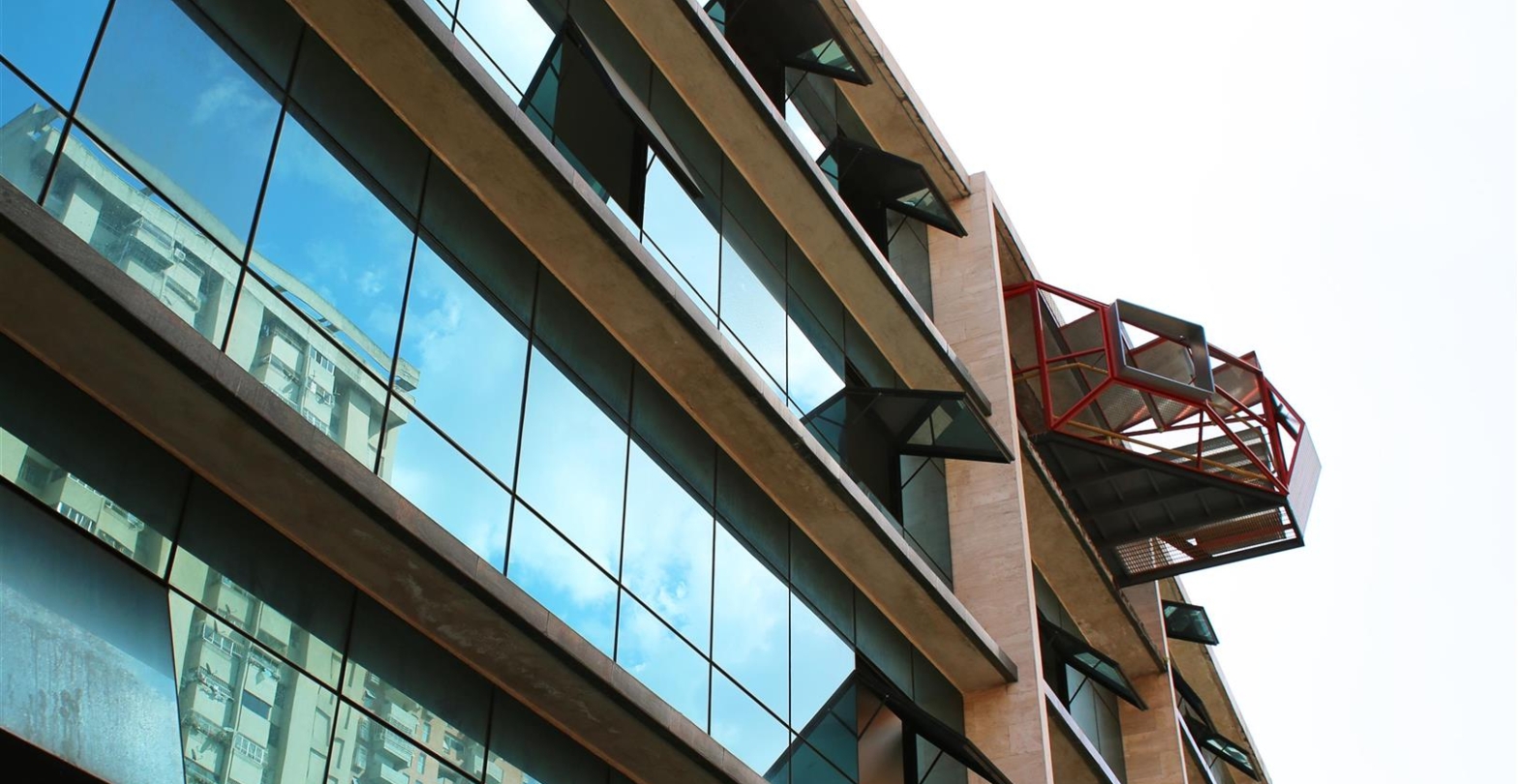A balcony traverses the facade of a hermetic building in Caracas. Marcos Coronel (@pico colectivo, 2019).
The city as we know it is collapsing and is unable to pose new alternatives of life. The virus is forcing us to assimilate the depleting of the buildings that comprise the city, and the systems that had conceived each city for itself. Basic activities separated by kilometres of distance between streets and roads, naves and galleries as enclosed envelopes and artificially acclimatised that does not allow crowds anymore, hence are unvisitable. Infra-human capsules stacked on top of each other on towers that do not contemplate open spaces, common areas, nor nature; where practically does not exist human contact with outdoors, will become increasingly dysfunctional over time.
The pandemic threats to irreversibly harm the social bridges and relationships that subsist with difficulty, and at the same time, paradoxically, poses a truly and latent opportunity to remedy our cities, but not through a topical and superficial treatment that pretends to recycle models to return to the same point in which we were before, but through a drastic change forward, one that leads us to think on a transformation beyond what is proven, implementing in-deep therapeutic interventions, experimenting with a new re-qualification of existing structures, along with propagation of new physical entities, new territories and new habitable organisms.
A paradigm shift of the cities is imminent. The new circumstances rule other spaces where different networks will find to realise in outbreaks of cohesion and places of exchange to inhabit on a manner without precedents. Other laws and prescriptions of architecture will allow fostering a reconfiguration of the city without dogmatism nor biases, on a proceeding that cannot ignore the magnitude of the diagnosed problem.

A security module controls the entry and exit into a community in Caracas. Atelier Caracas (Julio Kowalenko y Rodrigo Armas) Photo: Saúl Yuncoxar
A long time ago cities had become inefficient organisms prone to suffer from social segregation, as well as of toxic diseases. Cities would no longer be fragmented territories, nor ultra dependent, as sterile islands supplied by its outskirts, thus in these might proliferate the rest of vital functions that themselves require, adopting a resilient behaviour of its own fails, but also more immune to possible threats and disruptions of external factors.
Nevertheless, within the settlements we have organized as societies, it is possible to allocate ports for those future atmospheres. Elements that are already present as small filaments and cells in the context of places we are already residing. Communities and urbanization manners more integral ought to be in balance with natural environments, including safe and flexible spaces that be capable to foresee, or at least to resist and overcome efficiently, aggressive and harmful conditions.
In some way, all of the cities gather this potential to exploit, where each territory presents particular symptoms that will receive targeted methods and treatments.
But precisely, Caracas and other similar cities of Latin America that are at the limit, among emergents and vulnerable at the same time, constitute the ideal scenarios to think that it makes sense to transit to a challenging remedy of the cities.

An structure dialogues with the abandoned Guaire River and the highway. VIP – Urban facility made by Rodrigo Marín, Ricardo Sanz, Alba Izaguirre and Marx Avendaño (@Ciudad Reactiva, 2019).
Caracas is a complex and heterogeneous city that is comprised of multiple layers overlapping each other, intertwined on a single congenital structure. A chaotic and degraded territory, just as wondrous and vibrant. The city simultaneously holds sound developments, which require updates and refreshing, combined with other spaces where a flexible and unstable, intense and dynamic fabric is reproduced, demanding repairs with better endowments, services and infrastructures.
These counterpoints are in permanent contact and tension and are the breeding ground and laboratory most prone to apply structural correctives because of the threat that the virus embody. A city that ought to reinvent itself before phagocytise itself, before depredate to itself.
The river that flows throughout must heal, to recover its stream and extend its riversides, penetrating the hermetic fabric until merging with small forests and urban farms as stains that colonize entire zones. Another plotting system reversing the ratio of the constructed square meters, to favour the common public spaces. To dissolve boundaries and blend urban fabrics. Transparent buildings naturally oxygenating. Access to work, dwelling and elemental services, broadly interconnected.
It seems the world is rushing to return to ‘normality’, eager to spruce the crisis as attempting to desperately stop the downfall of what we have built, but the cities as we know them can no longer take the risk to face again a harmful frame, without previously changing.

Marcos Coronel.
–
Images:
[1] Air Filter, Parasite Balcony. Ecosystem of Cultural Economies. Caracas, Venezuela 2019.
Project author: Marcos Coronel (PICO colectivo) http://www.picocolectivo.org.ve
Photo: José Alberto Bastidas.
[2] Insta Bunker. Caracas, Venezuela 2019.
Project author: Atelier Caracas (Julio Kowalenko and Rodrigo Armas) http://www.ateliercaracas.com
Photo: Saúl Yuncoxar
[3] VIP. Caracas, Venezuela 2019.
Project author: Rodrigo Marín, Ricardo Sanz, Alba Izaguirre and Marx Avendaño (Ciudad Reactiva).
Photo: Rodrigo Marín.
[4] Panoramic view of Caracas from El Ávila (Waraira Repano National Park), Venezuela 2017.
Photo: José Alberto Bastidas.
*Many thanks to Karina Domínguez for her contribution in the revision of article translation.
